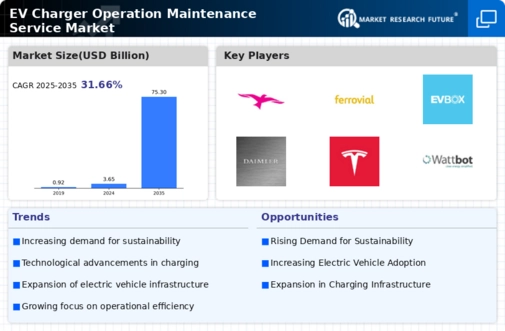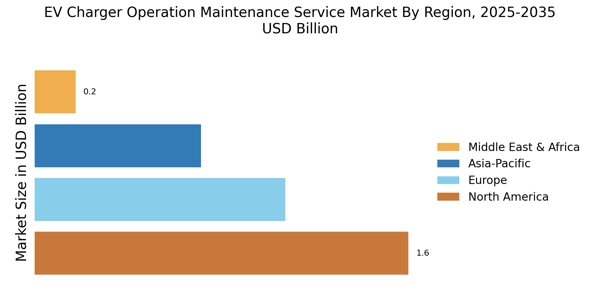Rising EV Adoption Rates
The increasing adoption of electric vehicles (EVs) is a primary driver for the EV Charger Operation Maintenance Service Market. As more consumers and businesses transition to EVs, the demand for reliable charging infrastructure intensifies. Recent data indicates that EV sales have surged, with projections suggesting that by 2025, EVs could account for a substantial percentage of new vehicle sales. This trend necessitates a robust maintenance service framework to ensure the operational efficiency of charging stations. Consequently, the growth in EV adoption directly correlates with the expansion of the maintenance service market, as stakeholders seek to minimize downtime and enhance user experience.
Growing Environmental Awareness
The rising awareness of environmental issues is a significant driver for the EV Charger Operation Maintenance Service Market. As consumers become more conscious of their carbon footprint, the shift towards electric vehicles is accelerating. This societal change is accompanied by an increased demand for sustainable practices, including the maintenance of EV charging infrastructure. The emphasis on reducing greenhouse gas emissions has led to a greater focus on ensuring that charging stations operate efficiently and sustainably. Consequently, maintenance services that prioritize eco-friendly practices are likely to see heightened demand, reflecting the broader trend towards sustainability in the transportation sector.
Government Incentives and Policies
Government incentives and policies play a crucial role in shaping the EV Charger Operation Maintenance Service Market. Many governments are implementing favorable policies to promote EV adoption, including tax credits, rebates, and grants for charging infrastructure development. These initiatives encourage investments in charging stations, which in turn increases the need for maintenance services. For example, recent legislative measures have allocated significant funding for the expansion of EV charging networks, indicating a commitment to sustainable transportation. As these policies continue to evolve, they are expected to create a more favorable environment for maintenance service providers, enhancing market growth.
Expansion of Charging Infrastructure
The expansion of charging infrastructure is a vital driver for the EV Charger Operation Maintenance Service Market. As the number of charging stations increases, so does the necessity for ongoing maintenance to ensure their reliability and accessibility. Recent reports indicate that the number of public charging stations is expected to grow significantly in the coming years, driven by both private and public investments. This expansion creates a pressing need for maintenance services that can address the unique challenges associated with a diverse range of charging technologies. As infrastructure grows, the market for maintenance services is likely to expand correspondingly, highlighting the interdependence between infrastructure development and service provision.
Technological Advancements in Charging Solutions
Technological advancements in EV charging solutions significantly influence the EV Charger Operation Maintenance Service Market. Innovations such as fast charging, wireless charging, and smart charging systems are becoming increasingly prevalent. These technologies not only improve the efficiency of charging but also require specialized maintenance services to ensure optimal performance. For instance, the integration of IoT in charging stations allows for real-time monitoring and predictive maintenance, which can reduce operational costs. As these technologies evolve, the demand for skilled maintenance services that can adapt to new systems is likely to grow, thereby driving the market forward.


















Leave a Comment